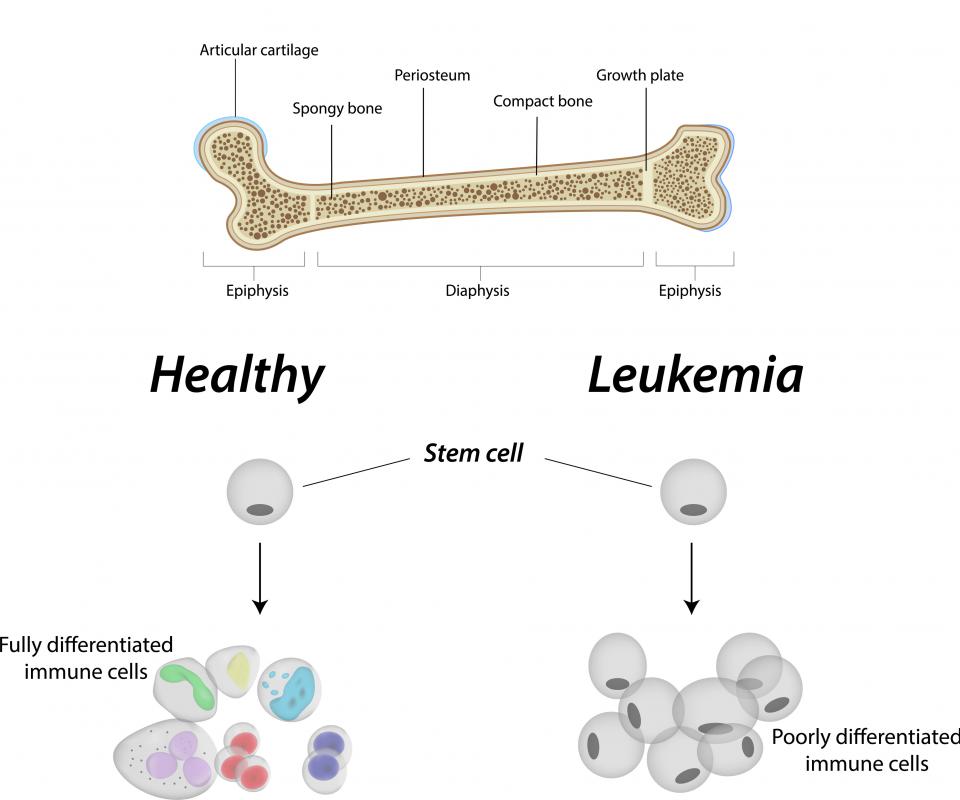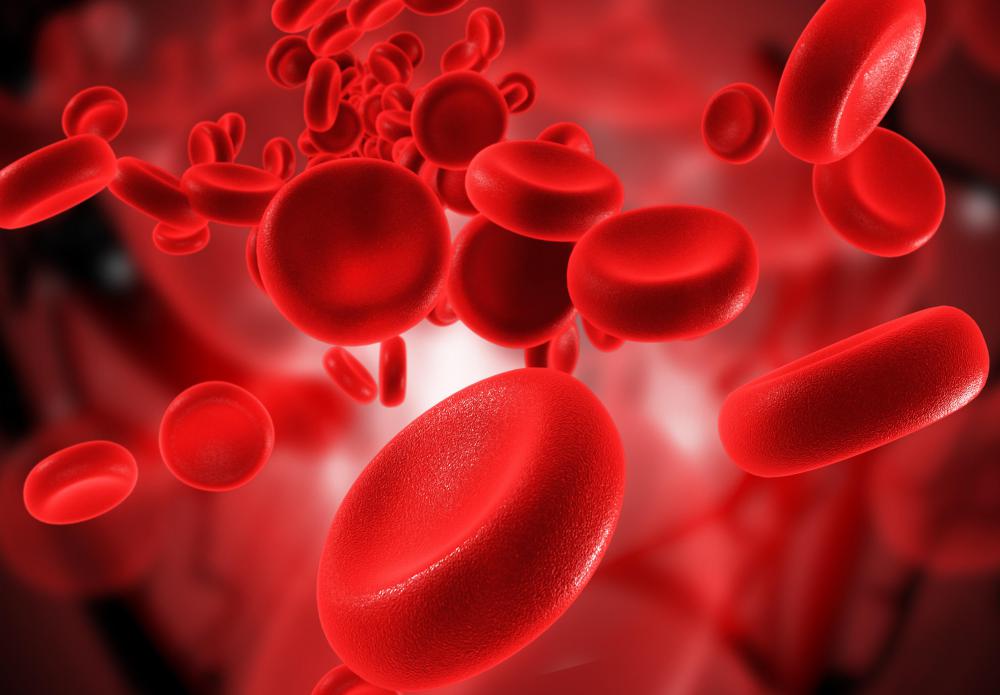At TheHealthBoard, we're committed to delivering accurate, trustworthy information. Our expert-authored content is rigorously fact-checked and sourced from credible authorities. Discover how we uphold the highest standards in providing you with reliable knowledge.
What are Blast Cells?
Blast cells are immature cells found in bone marrow. They are not fully developed, and therefore, do not yet carry out any particular function within the body. In normal humans, up to five percent of the cells found in bone marrow are blast cells. When a higher percentage of them are found, further testing may be needed, as this is an indication of one of several disorders which affect the blood and bones.
Normally, blast cells continue to mature within the bone marrow and then begin to carry out set functions. White blood cells make up the immune system and attack and destroy invading bacteria and viruses. Red blood cells carry oxygen throughout the body and release carbon dioxide to be exhaled by the lungs. In a healthy person, these functions are carried out normally and efficiently. The problem begins when too many blast cells do not mature.

When a higher than normal ratio of blast cells are found within the bone marrow a problem may exist. Leukemia is one of the most common blood-related cancers, and generally occurs when too many white blood cells remain as blast cells. Unlike normal cells, these mutated cells do not eventually mature and begin functioning within the body. They usually continue to be immature, and more are often formed at a rapid pace. This eventually causes a low blood count of normal cells.

There are varying degrees of leukemia and related diseases. A slightly higher than average blast cell count may only lead to anemia that can be treated. Very high counts often require cancer therapies like chemotherapy and radiation to kill off the quickly invading cells. This can also lead to a further decrease in healthy cells, since these therapies are not sophisticated enough to target only cancer cells.

Bone marrow transplants may be performed to replace malfunctioning marrow. This will allow the patient to once again produce normally functioning cells. Stem cell treatments may also be used to replace "bad" cells. The main drawback to these therapies is that an exact marrow or stem cell match is needed in order to perform the procedures. Donors are usually siblings, parents, or less commonly, other family members. In some cases, a non-related donor may be found.
AS FEATURED ON:
AS FEATURED ON:















Discussion Comments
Stem cells have the potential to become any type of cell in the body. They are completely undifferentiated.
Blast cells have already decided that they are going to become some sort of blood cell (neutrophil, eosinophil, etc.) but haven't committed yet to maturing to any particular type. They don't have a function until they mature. These malignant cells are non-functional and multiply, taking up resources and space that you need to make functional cells.
Hope that helps.
My sister's blast cell count is 78 percent. Is this leukemia?
I have a close friend who has a daughter and she is suffering from blast cells. She also has water around her heart. Her pulse rate is fluctuating. After the bone marrow biopsy was done, the report came out that she has 82 percent blast cells. What are the options for diagnosis and who should she consult? She is 25 years old and unmarried. She is doing her masters in dental currently. Please provide your suggestion.
Does the presence of blast cells necessarily mean blood cancer, or can it be some other disease?
My mother-in-law was diagnosed 11 months ago with CML in the blast crisis. She has had two rounds of chemo since that time. Last week, she was admitted back to the hospital due to kidney failure. We soon learned that her blast cells were back at 65 percent. Her doctor said no more chemo due to renal failure. She has been on two different meds for leukemia, but none have worked. She also has a type of mutation in her cells as well, that has kept all treatment from working.
This morning her doctor reported that the blast count is 90 percent and they have no other choice but to do chemo, even though she may not make it through it. My question: what is the highest percent of blast cells you can have in your body? This may sound absurd but I have no clue. The doctor had just started her on an experimental drug for the mutation and blast cells but due to renal failure they stopped it as well.
Look up M.D. Anderson Hospital and enter your questions. There is an immense amount of information from experts. I am a bladder cancer patient there, as well as an acute megakaryocytic leukemia patient, and have tremendous appreciation of all 17,000 employees at that Houston location.
For admission without a doctor's referral, dial 1-877-MDA-6789. You will be glad!
The article says bone marrow is an option. If that was done already eight months ago, then now what? If on the check up it showed blast cells at 7, does this mean a recurring episode?
CoffeeGirl85 - Both are undifferentiated cells and bone marrow stem cells are the most primitive of the cells in the marrow. Where they differ is in their development beyond this primitive state. Blast cells usually develop into large blood cells. They are set on this path, whereas stem cells can develop into any cell in the body. For example, bone marrow stem cells are capable of developing into non-marrow cells. That is the reason they can be used to replace "bad" blast cells that failed to mature. I hope that helps.
Aren't stem cells also immature cells that are found in bone marrow? I'm a bit confused about what the differences between blast cells and stem cells are. Could someone help me out? Thanks.
Post your comments